
29 Jul Genealogy Newsletter- July 29, 2023
Contents
- 1 GENEALOGY- SEVEN GENERATIONS OF OF A PREHISTORIC FAMILY MAPPED WITH ANCIENT DNA
- 2 GENEALOGY- CONTINUING WITH SIGNERS OF THE DECLARATION – IT IS NOTABLE THAT HE DESIGNED THE EXECUTIVE BRANCH AND ALSO WENT TO PRISON TWICE
- 3 GENEALOGY- UP IN ALASKA, YOU HEAR MORE ABOUT PRESIDENT WARREN HARDING THAN ANYWHERE ELSE ON EARTH…. AND YOU CAN’T TELL THE PRESIDENT “NO”
- 4 GENEALOGY- MY WIFE’S ALASKAN RELATIVE AND THE MISSING $79,995
- 5 GENEALOGY- MORE ON THOSE PAIN IN MY SIDE RELATIVES WHO LIVED IN THE WHITE HOUSE WITH THE PRESIDENT’S FAMILY
- 6 GENEALOGY- IS THAT UNCLE JACK ON THE WALL?
- 7 GENEALOGY- DID YOUR ANCESTORS SERVE AS SOLDIERS?
 GENEALOGY- SEVEN GENERATIONS OF OF A PREHISTORIC FAMILY MAPPED WITH ANCIENT DNA
GENEALOGY- SEVEN GENERATIONS OF OF A PREHISTORIC FAMILY MAPPED WITH ANCIENT DNA
An adult man buried some 6,000 years ago in what is now France was the son of the man from whom dozens of people also buried at the site are descended.
In the mid-2000s, archaeologists excavating a burial site in France uncovered a 6,500-year-old mystery. Among the remains of more than 120 individuals, one grave stood out. It contained a nearly complete female skeleton alongside a few assorted bones that looked like they had been dug up and moved from another grave.
Ancient DNA from the enigmatic relocated remains shows that they belonged to the male ancestor of dozens of the other people buried nearby. This insight comes from a study that used ancient genomics to build the largest-ever genealogy of a prehistoric family, providing a snapshot of life in an early farming community. The study was published on 26 July in Nature.
Western Europe is littered with monuments that served as burying grounds for high-status individuals from roughly 7,000 to 4,000 years ago, called the Neolithic. The dozens of burials at Gurgy ‘Les Noisats’, located about 150 kilometers southeast of Paris, lack any signs of such monuments or rich grave goods, indicating that they might have belonged to commoners, says study co-author Wolfgang Haak, an archaeogeneticist at the Max Planck Institute for Evolutionary Anthropology in Leipzig, Germany.
His team analyzed the genomes of 94 of the 128 individuals recovered from the site and used the data to determine how they were related to one another, their genealogy. The researchers expected some individuals to be related, based on the composition of other Neolithic sites.
But they were astounded to discover that around two-thirds belonged to a single-family tree spanning seven generations. The closer people were buried, the more closely related they were.
The jumble of bones was unique to the site. Yet, no grave goods or other evidence signaled his position or the reason his remains had been exhumed, says study co-author Maïté Rivollat, an archaeologist at the University of Ghent in Belgium.
The researchers have failed to extract DNA from the woman buried alongside him. She might have joined the family from another community if she was like the other adult women from the site — most of whom were not closely related to anyone else. This points to a social structure similar to those uncovered at other prehistoric sites where male descendants tended to stick around, whereas the women moved elsewhere.
The giant family tree revealed other previously hidden aspects of Neolithic life. All siblings shared the same mother and father, with no half-siblings present. This suggests that no individuals had multiple partners. “Here, it’s fairly straightforward and fairly monogamous,” says Haak. “Is that the standard life of the commoner and the non-elite?”
This contrasts with a later Neolithic burial in the United Kingdom, Hazleton North, where researchers identified a man who had reproduced with four women. Researchers must build family trees from other ancient burials to figure out what is typical, says Chris Fowler, an archaeologist at the University of Newcastle, UK, who was part of that study.
“This type of work really breathes new life into our understanding of ancient peoples,” says Kendra Sirak, an ancient DNA specialist at Harvard Medical School in Boston, Massachusetts. She’s most curious about the man at the root of the family tree, and his genealogy “I would love to know what made this person so important.”
By Ewen Callaway
 GENEALOGY- CONTINUING WITH SIGNERS OF THE DECLARATION – IT IS NOTABLE THAT HE DESIGNED THE EXECUTIVE BRANCH AND ALSO WENT TO PRISON TWICE
GENEALOGY- CONTINUING WITH SIGNERS OF THE DECLARATION – IT IS NOTABLE THAT HE DESIGNED THE EXECUTIVE BRANCH AND ALSO WENT TO PRISON TWICE
James Wilson (September 14, 1742 – August 21, 1798) was a Scottish-born American Founding Father, legal scholar, jurist, and statesman who served as an associate justice of the United States Supreme Court from 1789 to 1798. Wilson was elected twice to the Continental Congress, a signatory of the Declaration of Independence, and a major participant in drafting the U.S. Constitution. A leading legal theorist, he was one of the first four Associate Justices appointed to the Supreme Court by George Washington. In his capacity as the first professor of law at the College of Philadelphia (later to become the University of Pennsylvania), he taught the first course on the new Constitution to President Washington and his Cabinet in 1789 and 1790.
Born near Leven, Fife, Scotland, Wilson immigrated to Philadelphia in 1766 and became a teacher at the College of Philadelphia. After studying law under John Dickinson, he was admitted to the bar and established legal practice in Reading, Pennsylvania. He wrote a well-received pamphlet arguing that the British Parliament’s taxation of the Thirteen Colonies was illegitimate because the colonies lacked representation in Parliament. In 1775, he was elected to the Continental Congress, where he signed the Declaration the next year. In addition to his roles in public service, Wilson served as president of the Illinois-Wabash Company, a land speculation venture.
Wilson was a delegate to the 1787 Constitutional Convention in Philadelphia, where he was a member of the Committee of Detail, which produced the first draft of the Constitution. He was the principal architect of the executive branch of the federal government. Wilson was an outspoken supporter of greater participatory democracy, a strong national government, and proportional legislative representation based on population. Along with Roger Sherman and Charles Pinckney, he proposed the Three-fifths Compromise, which counted three-fifths of each state’s slave population toward that state’s total population for representation in the United States House of Representatives. While preferring the direct election of the president through a national popular vote, he proposed using an electoral college, which provided the basis of the Electoral College system ultimately adopted by the convention. Following the convention, Wilson campaigned for the Constitution’s ratification, and his “speech in the Statehouse yard” was reprinted in newspapers throughout the country. However, he opposed the Bill of Rights. Wilson also played a major role in drafting the 1790 Pennsylvania Constitution.
In 1789, Wilson joined the Supreme Court and was named a law professor on the College of Philadelphia faculty. Wilson experienced financial ruin in the Panic of 1796–1797 and was twice sent to debtors’ prison. In August 1798, he suffered a stroke, becoming the first U.S. Supreme Court justice to die.
For the story on George Clymer see:
https://gem.godaddy.com/promotions/23840345/edit

 GENEALOGY- UP IN ALASKA, YOU HEAR MORE ABOUT PRESIDENT WARREN HARDING THAN ANYWHERE ELSE ON EARTH…. AND YOU CAN’T TELL THE PRESIDENT “NO”
GENEALOGY- UP IN ALASKA, YOU HEAR MORE ABOUT PRESIDENT WARREN HARDING THAN ANYWHERE ELSE ON EARTH…. AND YOU CAN’T TELL THE PRESIDENT “NO”
In early June 1923, President Warren G. Harding set out on a journey, which he dubbed the “Voyage of Understanding”. The president planned to cross the country, go north to Alaska Territory, journey south along the West Coast, then travel by a U.S. Navy ship from San Diego along the Mexican and Central America West Coast, through the Panama Canal, to Puerto Rico, and return to Washington at the end of August. Harding loved to travel and had long contemplated a trip to Alaska.
Harding’s political advisers had given him a physically demanding schedule, even though the president had ordered it cut back. In addition to making speeches, he visited Yellowstone and Zion National Parks. He dedicated a monument on the Oregon Trail at a celebration organized by venerable pioneer Ezra Meeker and others. On July 5, Harding embarked on the USS Henderson in Washington state. He was the first president to visit Alaska and spent hours watching the dramatic landscapes from the deck of the Henderson. After several stops along the coast, the presidential party left the ship at Seward to take the Alaska Railroad to McKinley Park and Fairbanks (see picture above), where he addressed a crowd of 1,500 in 94 °F heat. The party was to return to Seward by the Richardson Trail, but they went by train due to Harding’s fatigue.
On July 26, 1923, Harding toured Vancouver, British Columbia, as the first sitting American president to visit Canada, where he spoke to a crowd of over 50,000. Harding visited a golf course but completed only six holes before becoming fatigued. After resting for an hour, he played the 17th and 18th holes to appear he had completed the round. He failed to hide his exhaustion; one reporter thought he looked so tired that the rest of mere days would be insufficient to refresh him. In Seattle the next day, Harding kept up his busy schedule, giving a speech to 25,000 people at the stadium at the University of Washington. In the final speech he gave, Harding predicted statehood for Alaska. The president rushed through his speech, not waiting for applause from the audience.
Harding went to bed early the evening of July 27, 1923, a few hours after giving the speech at the University of Washington. Later that night, he called for his physician, Charles E. Sawyer, complaining of pain in the upper abdomen. Sawyer thought it was a recurrence of stomach upset, but Dr. Joel T. Boone suspected a heart problem. The press was told Harding had experienced an “acute gastrointestinal attack,” and his scheduled weekend in Portland was canceled. He felt better the next day as the train rushed to San Francisco, where they arrived the morning of July 29. He insisted on walking from the train to the car and was then rushed to the Palace Hotel, where he suffered a relapse. Doctors found that his heart was causing problems, and he had pneumonia, and he was confined to bed rest in his hotel room. Doctors treated him with liquid caffeine and digitalis, and he seemed to improve. By the afternoon of August 2, Harding’s condition was still improving, and his doctors allowed him to sit in bed. At around 7:30 pm that evening, Florence was reading to him “A Calm Review of a Calm Man,” a flattering article about him from The Saturday Evening Post; she paused, and he told her, “That’s good. Go on, read some more.” Those were to be his last words. She resumed reading when Harding twisted convulsively a few seconds later and collapsed back in the bed, gasping. Florence Harding immediately called the doctors into the room, but they could not revive him with stimulants; Harding was pronounced dead a few minutes later at 57. Harding’s death was initially attributed to a cerebral hemorrhage, as doctors at the time did not generally understand the symptoms of cardiac arrest. Florence Harding did not consent to have the president autopsied. As Florence did not request an autopsy and destroyed many of his papers, a controversial theory was put forward in a semi-fictional book, “The Strange Death of President Harding”, claiming that Florence had poisoned her husband. However, this claim was soon debunked.
However, the rumors have persisted in Alaska, with locals saying that Harding was poisoned at the Fairview Inn in Talkeetna (he died almost a month after staying there). https://en.wikipedia.org/wiki/Fairview_Inn The rumor says that Mrs. Harding or his mistress, Nan Britton, did the poisoning. While Warren and Florence Harding had no children, it turns out that Warren and Nan Britton did have a child.
Elizabeth Ann Britton Harding Blaesing (née Britton Harding; October 22, 1919 – November 17, 2005) was the daughter of Warren G. Harding, the 29th president of the United States, and his mistress, Nan Britton. https://en.wikipedia.org/wiki/Elizabeth_Ann_Blaesing Harding and Britton, who both lived in Marion, Ohio, began their affair when he was a U.S. senator, and it continued until his sudden death during his presidency in 1923.
In 2015, The New York Times reported that genetic testing by AncestryDNA, a division of Ancestry.com, confirmed that Harding was Blaesing’s biological father. Specifically, Dr. Peter Harding, the grandnephew of President Harding, and James Blaesing, son of Elizabeth Ann Blaesing (above right), submitted DNA samples, which confirmed a relationship of second cousins, thus proving beyond a reasonable doubt that Elizabeth was the daughter of Harding.
Scott Allison Willits (March 26, 1895 – October 1973) was an American violin teacher (above left as a student)with the American Conservatory of Music in Chicago, Illinois, who coached many members of the Chicago Symphony Orchestra from 1940 through 1973. https://en.wikipedia.org/wiki/Scott_Willits On November 21, 1917, Willits married Elizabeth Blanch Britton, the sister of Nan Britton and aunt of Elizabeth Ann Blaesing, the illegitimate daughter of Warren G. Harding, the 29th President of the United States. In 1921, Willits and his wife adopted Blaesing. At that time, the Willitses lived in Athens, Ohio, and were both teaching music at Ohio University. They raised Elizabeth Ann until her mother again took custody five years later. “The Strange Death of President Harding” documented the Willits’ role as adoptive parents. In recounting how he became guardian for Britton, Willets told a student that he was summoned to the White House by President Harding. When asked how he reacted to the request, Willits replied, “When the President of the United States asks for your help, you don’t say ‘no’.” https://en.wikipedia.org/wiki/Fairview_Inn The rumor says that Mrs. Harding or his mistress, Nan Britton, did the poisoning. While Warren and Florence Harding had no children, it turns out that Warren and Nan Britton did have a child.
 GENEALOGY- MY WIFE’S ALASKAN RELATIVE AND THE MISSING $79,995
GENEALOGY- MY WIFE’S ALASKAN RELATIVE AND THE MISSING $79,995
James Lessinger Wickersham (August 24, 1857 – October 24, 1939) was a district judge for Alaska, appointed by U.S. President William McKinley to the Third Judicial District in 1900. He resigned his post in 1908 and was subsequently elected as Alaska’s delegate to Congress, serving until 1917 and then being re-elected in 1930. He was instrumental in passing the Organic Act of 1912, granting Alaska territorial status. He also introduced the Alaska Railroad Bill, legislation to establish McKinley Park, and the first Alaska Statehood Bill in 1916. He was among those responsible for creating the Alaska Agricultural College and School of Mines, which later became the University of Alaska.
In the upper corner is a photo of James Wickersham standing in front of a First National Bank Assay Office, holding what appears to be a gold brick, cigar in mouth.
When I saw Wickersham’s House at Pioneer Park, I wondered if he was related to my wife, who has Wickersham ancestry. Sure enough, she is James Wickersham’s 3rd cousin, three times removed. Their common ancestors were James Wickersham and Ann Eachus. James and Ann had, amongst many children, two sons, Sampson (Alaska James’ ancestor) and my wife’s ancestor, James.
There is an interesting story about my wife’s 4th great-grandfather James (son of James and Ann, not to be confused with Alaska’s James Lessinger Wickersham), who died in Newberry, PA, on November 25, 1815, at 71.
According to the story passed down (see the picture of the letter below) by her granddaughter Della Moon, he left a large estate to his daughter Mary of $80,000. According to the story, Mary’s (insert evil) stepmother instead got the money.
His will (copy transcribed below) indicates he wasn’t wealthy and left her $50 instead. That’s why you need to have Dancestors check out those family stories!

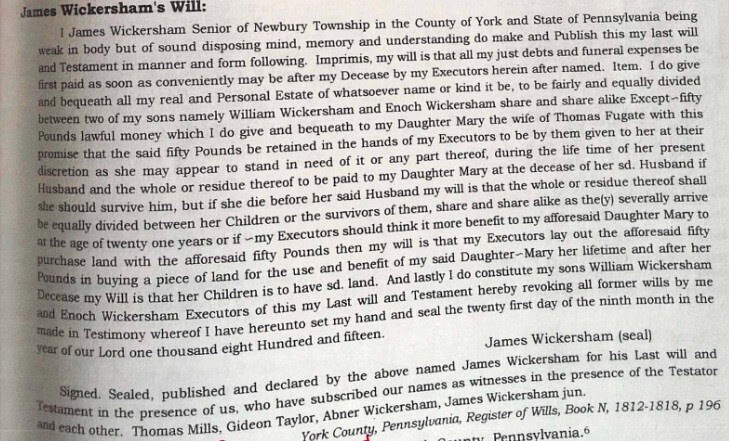
 GENEALOGY- MORE ON THOSE PAIN IN MY SIDE RELATIVES WHO LIVED IN THE WHITE HOUSE WITH THE PRESIDENT’S FAMILY
GENEALOGY- MORE ON THOSE PAIN IN MY SIDE RELATIVES WHO LIVED IN THE WHITE HOUSE WITH THE PRESIDENT’S FAMILY
Harry Truman and Bess Wallace met as children. He was a farm boy; she was the well-heeled granddaughter of Independence, Missouri’s Flour King. On June 28, 1919, Harry S. Truman, recently returned from serving in France in the Great War, married his long-time sweetheart, Elizabeth Virginia Wallace, here in Independence at Trinity Episcopal Church. After their honeymoon, the newlyweds moved into Bess Wallace Truman’s family’s home at 219 North Delaware Street. From 1945 to 1953, 219 North Delaware would be known as the “Summer White House.” But in 1919, it was often known as the Gates Mansion or the Gates/ Wallace House.
Truman was a struggling haberdasher, and Bess’s mother, Madge Wallace (see above), thought Bess had made a colossal social faux pas. Until she died in 1952, Madge Wallace never changed her mind about Harry Truman. Her Bess had married way below her station.
It was full of in-laws when Harry Truman moved into 219 North Delaware in 1919, including his grandmother-in-law, mother-in-law, and brother-in-law (who eventually married and had two children while living there). But most of the time that Harry S. Truman lived at 219 North Delaware Street, it was owned by his in-laws! The three lived under the same roof until the end of Madge’s life.
When Harry Truman was elected senator, “Mother Wallace,” as Truman judiciously called her, moved with her daughter and son-in-law to Washington. She shared a bedroom in the family’s apartment with the Trumans’ daughter, Margaret. And when Truman became president, she moved with them into the White House, where she cast her cold eye on the new commander-in-chief.
“Why would Harry run against that nice Mr. Dewey?” she wondered aloud as Truman fought for his political life in the 1948 presidential race, according to “First Mothers” by Bonnie Angelo. And Mother Wallace was scandalized when Truman fired Gen. Douglas MacArthur for insubordination. “Imagine a captain from the National Guard [Truman] telling off a West Point general!”
In December 1952, shortly before Truman’s term ended, Madge Wallace died at age 90. For the 33 years they lived together, she never called her son-in-law anything but “Mr. Truman” to his face.
As a side note- When President Lyndon Johnson signed Medicare into law in 1965, Harry and Bess Truman were the first senior citizens to receive Medicare cards, presented to them by Johnson at the Truman Library.
Bess remains the longest-lived first lady in United States history at 97, followed by Rosalynn Carter, who will be 96 in August.
https://gem.godaddy.com/promotions/23840345/edit
 GENEALOGY- IS THAT UNCLE JACK ON THE WALL?
GENEALOGY- IS THAT UNCLE JACK ON THE WALL?
One more Alaska story- While visiting the Fountainhead Automotive Museum in Faribanks. https://www.fountainheadmuseum.com/our-collections I was surprised to find a picture of my granddaughter’s 3rd Great Uncle Jack on the wall. The 1917 picture has him standing in front of 1916 Dodge with skis mounted on the front tires.
Jack was the Chief Engineer on the Valdez-Fairbanks Road https://en.wikipedia.org/wiki/Thompson_Pass
His nephew George Ashby who owned the Copper Center Roadhouse and has a museum named after him in Copper Center.
https://en.wikipedia.org/wiki/Copper_Center,_Alaska
https://www.museumsusa.org/museums/info/8807
 GENEALOGY- DID YOUR ANCESTORS SERVE AS SOLDIERS?
GENEALOGY- DID YOUR ANCESTORS SERVE AS SOLDIERS?
Reach out to Dancestors to research, discover, and preserve your family history. No one is getting any younger, and stories disappear from memory every year and eventually from our potential ability to find them. Paper gets thrown in the trash; books survive! So do not hesitate and call me @ 214-914-3598.


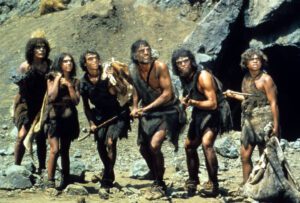 GENEALOGY- SEVEN GENERATIONS OF OF A PREHISTORIC FAMILY MAPPED WITH ANCIENT DNA
GENEALOGY- SEVEN GENERATIONS OF OF A PREHISTORIC FAMILY MAPPED WITH ANCIENT DNA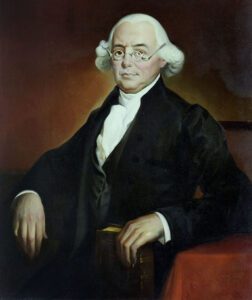 GENEALOGY- CONTINUING WITH SIGNERS OF THE DECLARATION – IT IS NOTABLE THAT HE DESIGNED THE EXECUTIVE BRANCH AND ALSO WENT TO PRISON TWICE
GENEALOGY- CONTINUING WITH SIGNERS OF THE DECLARATION – IT IS NOTABLE THAT HE DESIGNED THE EXECUTIVE BRANCH AND ALSO WENT TO PRISON TWICE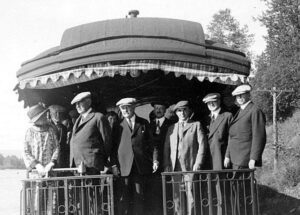 GENEALOGY- UP IN ALASKA, YOU HEAR MORE ABOUT PRESIDENT WARREN HARDING THAN ANYWHERE ELSE ON EARTH…. AND YOU CAN’T TELL THE PRESIDENT “NO”
GENEALOGY- UP IN ALASKA, YOU HEAR MORE ABOUT PRESIDENT WARREN HARDING THAN ANYWHERE ELSE ON EARTH…. AND YOU CAN’T TELL THE PRESIDENT “NO”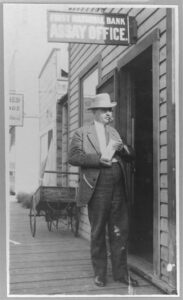 GENEALOGY- MY WIFE’S ALASKAN RELATIVE AND THE MISSING $79,995
GENEALOGY- MY WIFE’S ALASKAN RELATIVE AND THE MISSING $79,995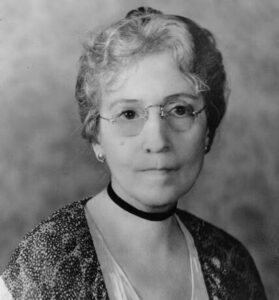 GENEALOGY- MORE ON THOSE PAIN IN MY SIDE RELATIVES WHO LIVED IN THE WHITE HOUSE WITH THE PRESIDENT’S FAMILY
GENEALOGY- MORE ON THOSE PAIN IN MY SIDE RELATIVES WHO LIVED IN THE WHITE HOUSE WITH THE PRESIDENT’S FAMILY GENEALOGY- IS THAT UNCLE JACK ON THE WALL?
GENEALOGY- IS THAT UNCLE JACK ON THE WALL? GENEALOGY- DID YOUR ANCESTORS SERVE AS SOLDIERS?
GENEALOGY- DID YOUR ANCESTORS SERVE AS SOLDIERS?